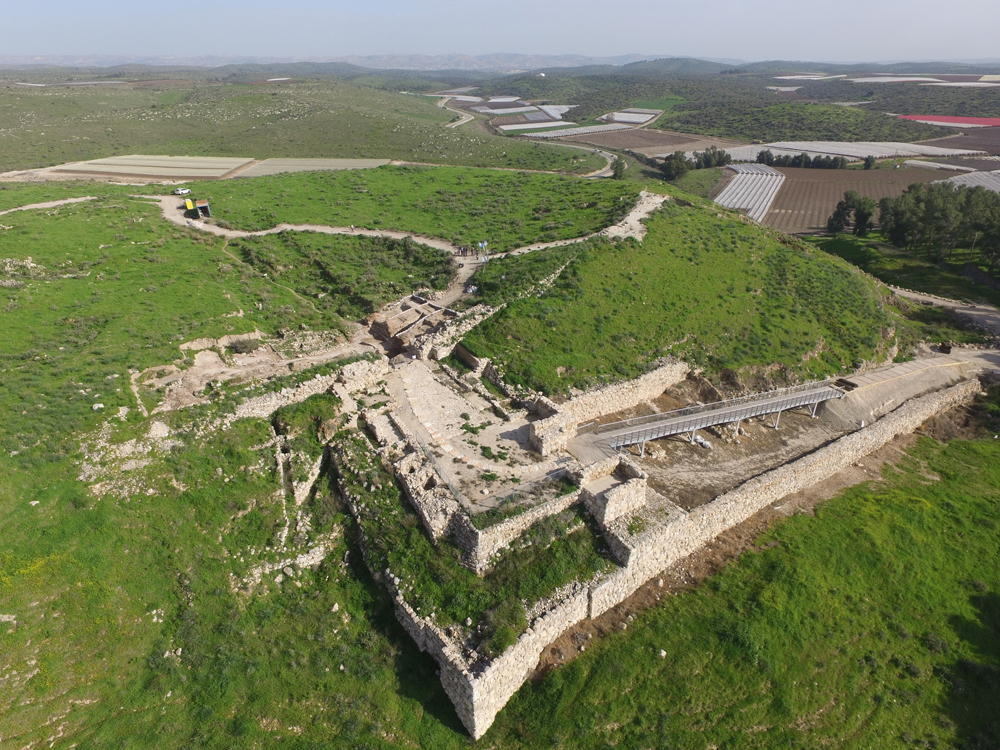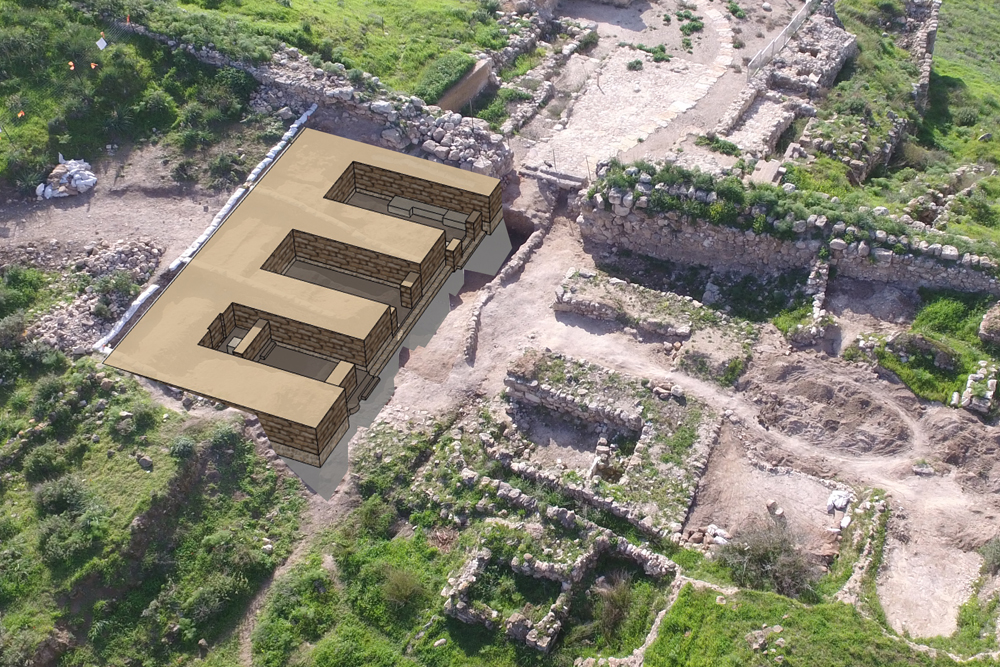Ancient City Gate and Shrine from Hebrew Bible Uncovered

An ancient city gate and shrine that King Hezekiah ordered to be destroyed during the eighth century B.C., according to the Hebrew Bible, are seeing the light of day following an excavation in Israel, archaeologists reported today (Sept. 28).
The so-called gate-shrine is likely evidence of actions taken by King Hezekiah, the 12th king of Judea, to abolish idols, according to the Israel Antiquities Authority (IAA). Hezekiah's father, Ahaz, was known as a godless man, and as soon as Hezekiah ascended the throne, he ordered the destruction of all of the false idols (objects, other deities or animals that people worshipped) in the kingdom, according to Chabad.org, a website on Judaism.
In the Hebrew Bible, a verse explains how "He [Hezekiah]removed the high places, smashed the sacred stones and cut down the Asherah poles [associated with a sacred goddess]…" (II Kings 18:4), the IAA said. [See Photos of Artifacts Recovered from the Excavation at the Gate-Shrine]
Sprawling gate
The gate is located in the ancient city of Tel Lachish within an 80-by-80-foot (24.5 by 24.5 meters) six-chambered area, with three chambers on each side and the city's main street passing between them, the IAA said.
The northern section of the gate was unearthed decades ago by an expedition led by archaeologists from the United Kingdom and Tel Aviv University. The latest excavation, which took place from January to March 2016, focused on uncovering the entire gate, the IAA said.
The excavation was no small task, as the gate is the largest one in Israel dating back to the First Temple period, a time when the kingdom used the temple built by King Solomon, the IAA said.
"The size of the gate is consistent with the historical and archaeological knowledge we possess," Sa'ar Ganor, an excavation director with the Israel Antiquities Authority, said in a statement. According to biblical narrative, "everything took place" at the gates of the ancient city of Tel Lachish, where the gate-shrine was originally built, the IAA said.
Get the world’s most fascinating discoveries delivered straight to your inbox.
High-ranking people — including city elders, judges, governors, kings and officials — would sit on the benches by the city gate, and "these benches were found in our excavation," Ganor said.
Moreover, the new discovery illustrates "how biblical tales that are known to us become historical and archaeological stories" as research progresses, said Ze'ev Elkin, who serves as minister of Jerusalem affairs and heritage and environmental protection as well as a member of the Knesset, the Israeli parliament.
Broken alters
The Tel Lachish city gate is now exposed and preserved to a height of about 13 feet (4 m). The excavation revealed that the first chamber held benches with armrests, as well as jars, scoops that were used for loading grain, and stamped jar handles that have the name "lmlk" on them, the seal belonging to the king, the IAA said.
These jars were likely related to the military and administrative preparations of the Kingdom of Judah in the war against Sennacherib, the king of Assyria, in the late eighth century B.C., the IAA said. [The Holy Land: 7 Amazing Archaeological Finds]
Further excavations revealed more evidence of Hezekiah's actions.
"Steps to the gate-shrine in the form of a staircase ascended to a large room, where there was a bench upon which offerings were placed," Ganor said. "An opening was exposed in the corner of the room that led to the holy of holies [the gate-shrine]; to our great excitement, we found two four-horned altars and scores of ceramic finds consisting of lamps, bowls and stands in this room."
However, the horns on the alter were intentionally cut.
"That is probably evidence of the religious reform attributed to King Hezekiah, whereby religious worship was centralized in Jerusalem and the cultic high places that were built outside the capital were destroyed," Ganor said.
In addition, archaeologists found a stone toilet installed in the corner of the gate-shrine, perhaps as a means of desecration, the IAA said. The Bible mentions other descriptions of placing toilets in cultic areas for desecration purposes. For instance, King Jehu ordered the destruction of the cult of Ba'al in Samaria. "And they demolished the pillar of Ba'al, and demolished the house of Ba'al, and made it a latrine to this day" (II Kings 10:27), according to the IAA.
However, this is the first time an archaeological discovery has confirmed a "latrine" passage from the Bible, the IAA said. Laboratory tests on the stone toilet suggest that it was never used and may have served a symbolic purpose before the gate-shrine was sealed and later destroyed by Sennacherib in 701 B.C., the IAA said.
In fact, the excavation also found signs of the kingdom's defeat, including arrowheads and sling stones, which indicate the practice of hand-to-hand combat near the city's gatehouse. However, this isn't the only evidence of Sennacherib's military campaign. His campaign is also known from the archaeological record, the Bible (II Kings 18 and II Chronicles 32) and the Tel Lachish wall reliefs from Sennacherib's palace in Nineveh, which depict the tale of the city's conquest, the IAA said.
The IAA excavation was part of an initiative led by the Ministry of Jerusalem and Heritage, in cooperation with Israel's Nature and Parks Authority. The site, located within Tel Lachish National Park, isn't yet open to the public.
Original article on Live Science.

Laura is the managing editor at Live Science. She also runs the archaeology section and the Life's Little Mysteries series. Her work has appeared in The New York Times, Scholastic, Popular Science and Spectrum, a site on autism research. She has won multiple awards from the Society of Professional Journalists and the Washington Newspaper Publishers Association for her reporting at a weekly newspaper near Seattle. Laura holds a bachelor's degree in English literature and psychology from Washington University in St. Louis and a master's degree in science writing from NYU.




